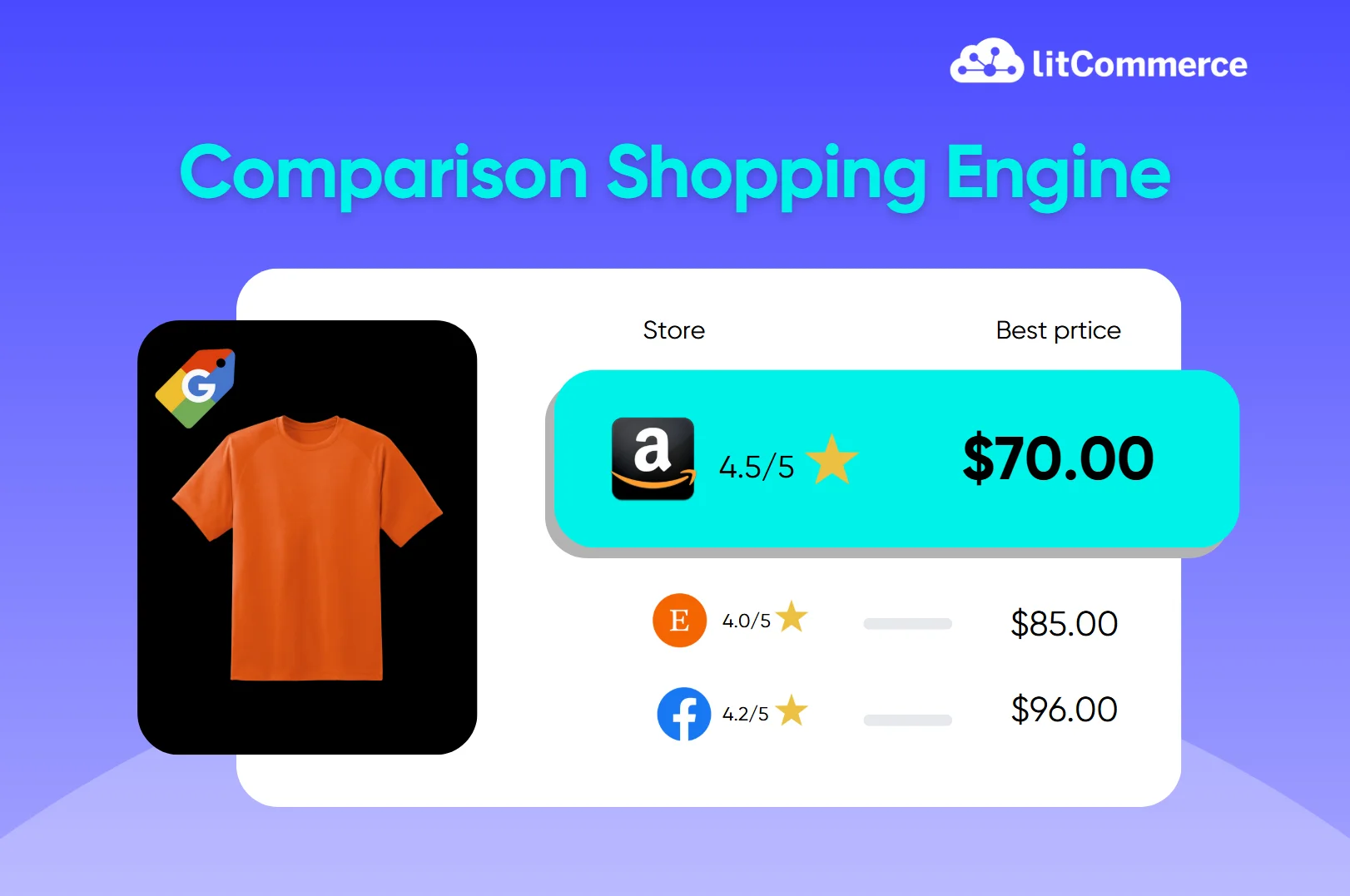Are you looking to get your products in front of more buyers without overspending on ads? comparison shopping engine (CSEs) might be your next best move. These platforms help shoppers compare prices across multiple stores and they help online sellers like you reach high-intent buyers who are ready to purchase.
In this guide, we’ll explore the pros and cons of the top 11+ comparison shopping engine every seller should know in 2025:
- Google Shopping
- Bing Shopping
- Shopzilla
- PriceRunner
- PriceGrabber
- Bizrate
- Idealo
- GetPrice
- Seakdeals
- ShopMania
- BuyVia
- Yahoo! Shopping
Let’s dive in and find the right tool to help your products stand out and sell more!
Google Shopping
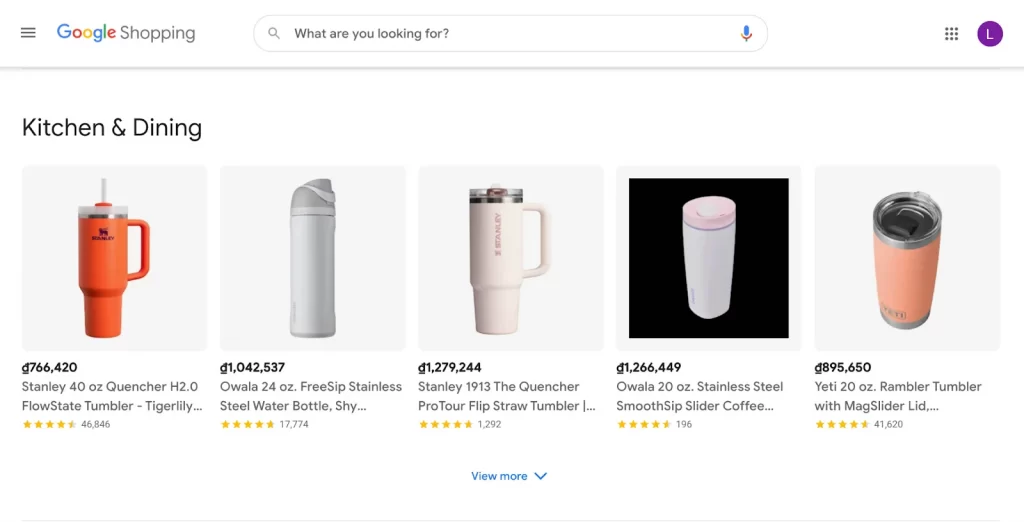
One of the most popular comparison shopping engine is Google Shopping. It is a powerful platform that enables users to discover and compare products from various online retailers. It attracts approximately 1.7 million visitors per month. It supports a wide range of product categories, including electronics, fashion, home goods, and more.
Google Shopping operates primarily on a pay-per-click (PPC) model, where advertisers pay for each ad click, making it ideal for businesses seeking targeted traffic and high conversion rates. Best suited for retailers looking to increase visibility and drive sales through visually engaging ads.
Pros
- Products appear prominently in Google search results.
- Qualified leads generated
- No upfront costs, paying only for clicks or completed sales.
Cons
- Complex setup, including Google Merchant Center account and product feed.
- Changes in Google’s algorithms or policies can impact product rankings and ad performance.
Bing Shopping
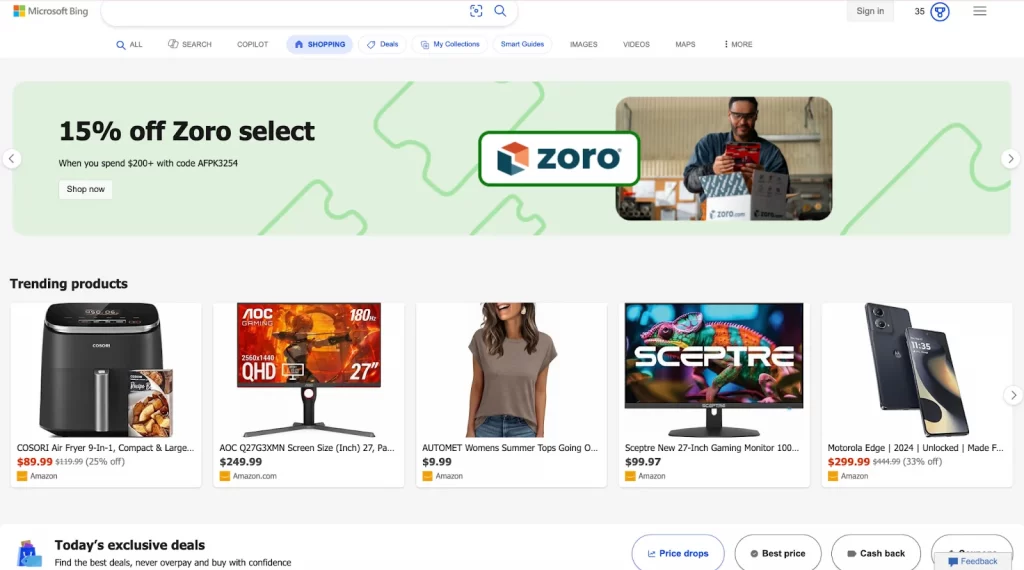
Microsoft Bing is the second-largest comparison shopping engine, following Google. When you list products in Bing Shopping, you product ‘ll appear on Bing’s search result pages. Bing allows users to find and compare products from various sellers on a single platform. It attracts approximately 6.1 billion monthly active users.
Bing Shopping supports a wide range of product categories, including electronics, fashion, and home goods, and operates primarily on a pay-per-click (PPC) model, where merchants pay for each ad click. This platform is best suited for businesses looking to reach a diverse audience with lower competition compared to Google Shopping.
Pros:
- Lower cost-per-click (CPC)
- Higher click-through rates
- Less competition
- Easy feed setup and import into Bing merchant center
Cons:
Smaller market share compared to Google
Shopzilla
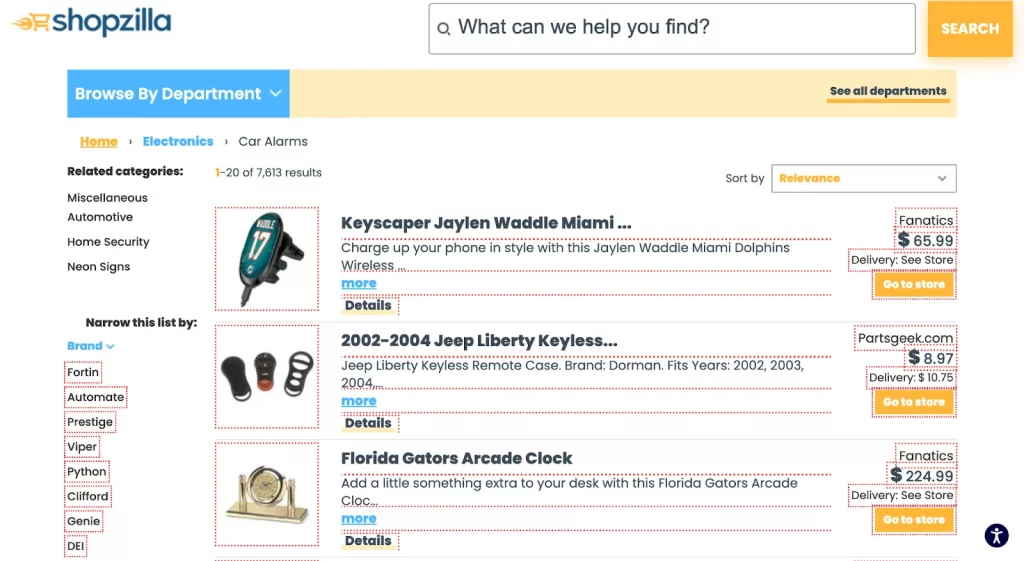
Shopzilla is a comparison shopping engine software founded in 1996, offering a platform for retailers to list products and reach consumers across North America and Europe. Its parent company was rebranded and renamed Connexity. This platform excels at comparing prices for fashion and home goods and offers detailed filtering options and user reviews.
Pros for Sellers:
- Retailers pay only when shoppers click on their listings, ensuring cost-effective advertising.
- Offers targeted advertising services to increase product visibility.
Cons for Sellers:
- Retailers must bid on keywords, which can lead to higher costs if they want prominent listings.
- Higher bids are required for better positioning, which can be competitive and costly.
Smoothly Product Feed Creation for Maximum Sales!
List your products seamlessly on Google Shopping, Bing, PriceRunner, and more with LitCommerce, ensuring your listings meet each platform’s unique requirements. Customize your feeds easily with 2,000+ pre-designed templates.
PriceRunner

PriceRunner is a leading price comparison website with about 1.7 million monthly visits. This comparison shopping engine was first launched in 1999 and is mainly active in the UK, Sweden, Denmark, and Norway. PriceRunner supports a broad spectrum of product categories, but it is particularly effective for electronics and home appliances.
Pros:
- Flexible bidding options, including a low minimum CPC of $0.01.
- High trust and credibility
Cons:
- Must pay extra to display their logos on ads.
- Limited market reach in select European countries.
PriceGrabber
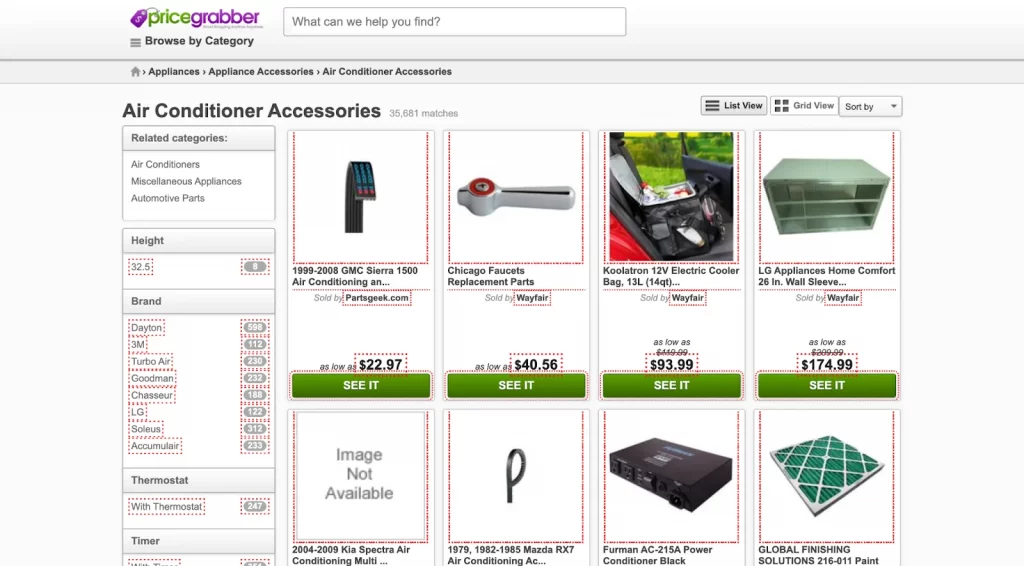
PriceGrabber is a comparison shopping engine research founded in 1999 and acquired by Experian in 2005. This platform specializes in electronics and technology products and offers detailed specification comparisons and price alerts. It operates primarily on a pay-per-click (PPC) model, where merchants pay for each ad click.
Pros:
- High traffic with over 60 million unique shoppers monthly,
- Supports mobile shopping
Cons:
High competition
Bizrate

Another comparison shopping engine monitoring is Bizrate. It supports various product categories and operates on a pay-per-click model, where merchants pay for each ad click. This comparision shopping engine is best suited for retailers seeking to leverage customer reviews and ratings to build trust and drive sales.
By integrating with Bizrate, businesses can reach a broad audience and benefit from enhanced credibility through user feedback.
Pros
- Attract 10.7 million visitors monthly.
- Free Plan Available.
- High trust and credibility comparison site
Cons
- Competitive pricing
- Dependence on Bizrate’s algorithm and bidding structure.
Idealo

Idealo is one of Europe’s leading price comparison platforms, operating in six countries including the UK, Germany, France, Italy, Spain, and Austria. It attracts over 94 million visits monthly, offering a comprehensive comparison of prices, product specifications, reviews, and test scores. Idealo supports categories and provides tools like price alerts.
Pros:
- High-quality traffic for merchants
- Free access to merchant backend (idealo Business)
- Optimised for mobile devices
Cons:
High competition
GetPrice
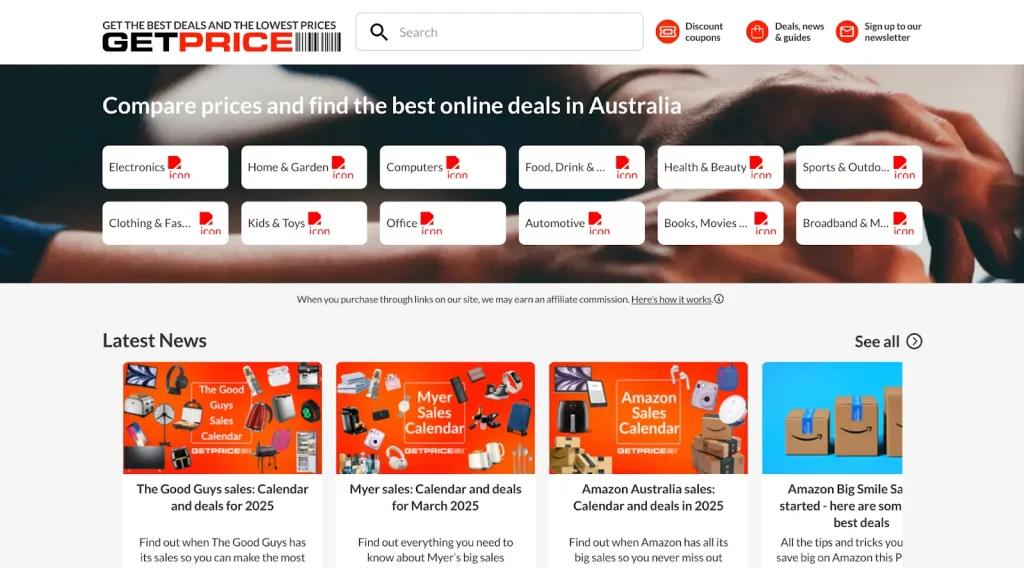
GetPrice is Australia’s leading online comparison shopping engine, founded in 2005 that specializes in comparing prices for tech products and home appliances. It’s particularly effective for retailers targeting the Australian market, as it offers useful features like price alerts to attract price-conscious consumers.
Pros
- Partners with more than 1,000 Australian retailers;
- Provides users with the ability to set price alerts for desired products;
- Support diverse feed formats such as CSV, XML, or TXT, and more;
- Mobile-friendly website.
Cons
- Limiting international exposure;
- Require approval listing before going live.
Create Error-free and High-accuracy Product Feed Now !
With LitCommerce smart rules and quality check, you can reduce manual errors, ensure accurate, up-to-date product feeds, and meet the unique requirements of each comparison shopping engine.
ShopMania
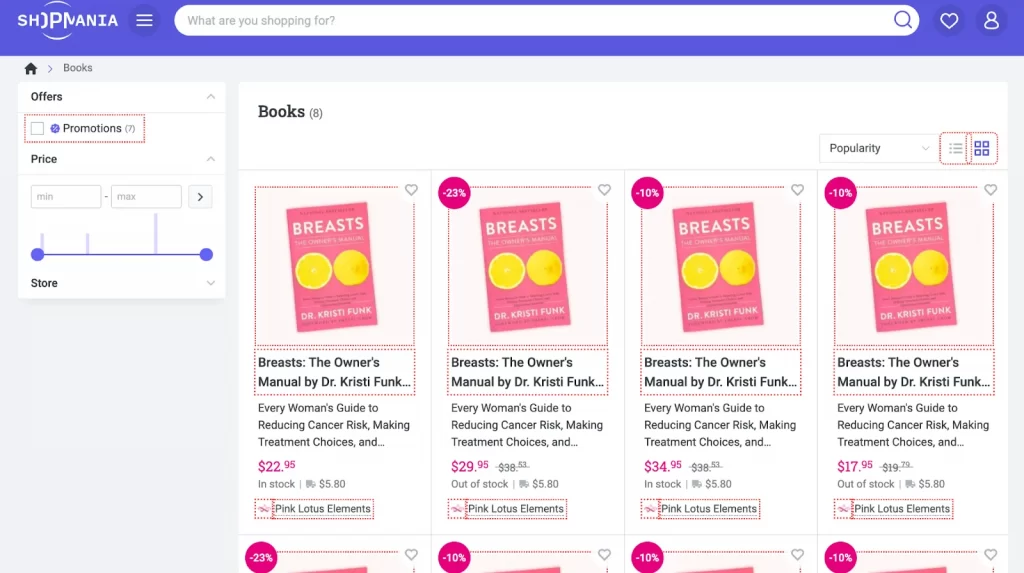
ShopMania is comparison shopping engine search analytics and shopping portal. It provides detailed product information, reviews, and comparisons to help users make informed purchasing decisions using the CPC model that helps merchants control budgets effectively.
Pros:
- Supports diverse data feed formats such as XML, CSV, or TXT.
Cons
- Not-so-friendly interface;
- Limited product selection.
BuyVia

BuyVia is a mobile and desktop price comparison shopping engine that focuses on providing users with intelligent shopping capabilities. It offers features like UPC/QR scanning, geo-local deals, and wish lists, making it a versatile tool for shoppers.
BuyVia partners with major retailers such as Amazon, HP, and Dell to offer a wide range of products. It is ideal for businesses looking to expose their brand to a growing mobile audience.
Pros
- Wide product selection;
- Easy search and price tracking;
- User-friendly interface;
- Offers UPC and QR code scanning.
Cons
- Does not have user reviews;
- No direct sales integration.
Yahoo! Shopping

Yahoo! Shopping is a monitor comparison shopping engine that helps users find products from various merchants with online stores. This platform allows users to compare prices, view promotions, shop by category, read product reviews, and more. While users cannot purchase items directly from Yahoo! Shopping, they are directed to third-party merchant sites to complete their purchases.
It offers price comparison tools, historical price data, CPC models, and cashback opportunities. This platform is best for everyday items and household goods.
Pros:
- Provide access to a large and active user base.
- Offers a cashback program that can incentivize purchases and increase sales.
Cons
- Limited payment options.
Pros and Cons of Selling on Comparison Shopping Engine
Selling on comparison shopping engine monitoring offers a great opportunity for retailers to increase visibility, attract high-intent shoppers, and stay competitive. However, it come with challenges.
Let’s discover the pros and cons of this platform to determine whether CSEs are the right fit for your business:
Pros | Cons |
Increased visibility: CSEs provide a platform for sellers to reach a targeted audience actively searching for products, increasing visibility and potential sales. Provide high-quality traffic: Shoppers on CSEs have a high intent to purchase, making them more valuable than general website visitors. Increase competitive advantage: Sellers can highlight unique features, competitive pricing, and special offers to stand out against competitors. Convenience: Sellers can manage multiple listings across different platforms more efficiently. | Costly: CSEs typically operate on a pay-per-click (PPC) model, which can be expensive if not managed effectively. Intense competition: Sellers face competition from numerous vendors who sell the same product. Depend on accurate feed data: Success on CSEs relies on maintaining accurate and up-to-date product information. Each CSE has different product feed requirements that sellers have to follow to list products. |
Expert Tips to Maximize Comparison Shopping Engine ROI
To get the most out of your CSE campaigns, optimizing product listings, pricing strategies, and bidding techniques is essential. In the next section, we’ll share practical tips to help you enhance your performance and improve conversions:
💡 Optimize product data regularly: To attract more buyers, use at least three high-quality images (1000 x 1000 pixels, 1:1 ratio) per product. Additionally, write 150–200 word descriptions with relevant keywords. Most importantly, update your product feed regularly to reflect pricing, stock, and promotions.
💡 Stay competitive with pricing: To remain competitive, monitor competitor prices twice daily using tools like Prisync. Moreover, set dynamic pricing rules, such as offering a 5–10% discount on bestsellers or adjusting prices within 2% of competitors, ensuring profitability while staying attractive to buyers.
💡 Be smart with bidding: Since not all products perform equally, adjust bids strategically. Increase bids 15–20% for high-converting products while lowering them 10–15% for low-performing ones.
💡Diversify across multiple platforms: To expand your reach, list products on 3–5 CSEs like Google Shopping, Bizrate, and Shopzilla. Furthermore, allocate 60% of your budget to top-performing platforms and test new ones for 30 days before making long-term investments.
Comparison Shopping Engine: FAQs
It is when a consumer visits multiple retailers, either online or offline, to compare prices, features, and reviews of similar products before making a purchase. For instance, Bing Shopping, Google Shopping, compared prices for office supplies across different suppliers to find the best deal. The best software for price comparison depends on the specific needs of the user, but here are some popular options including PriceGrabber, Idealo, Shopzilla, Google Shopping. Some disadvantages of comparison shopping include: prices and product details may not always be accurate or up-to-date, Additional fees like shipping costs might not be reflected in initial comparisons, and more. No, it isn’t. While it offers features like shoppable Pins and product tags, its primary focus is on visual discovery and inspiration rather than direct price comparisons across multiple retailers.
Wrap up!
By now, you have a clear understanding of the top comparison shopping engine (CSEs), how they work, and how to choose the best platform for your business. With a variety of CSEs like Google Shopping, Bing Shopping, Shopzilla, and PriceGrabber, you have plenty of opportunities to expand your reach, attract high-intent shoppers, and increase sales.
Additionally, by applying expert tips such as strategic bidding, competitive pricing, and optimized product data, you can maximize your return on investment. For more expert insights, be sure to check out the LitCommerce Retailer Blog, and don’t hesitate to reach out if you need any assistance!

